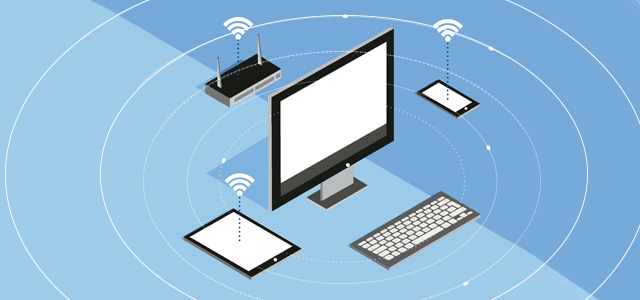We prepared this content to explain better about two important measurements that are part of the analysis of the quality of a network: the SNR and the RSSI, check below everything about these two acronyms and their relevance!
What is SNR?

O SNR (Signal to Noise), or Signal-to-Noise Ratio in Portuguese, is an indicator that analyzes the quality of a signal, expressed in Decibels, being defined by the ratio between its strength compared to the power of the noise superimposed on it.
As an example, imagine two people trying to communicate in a subway station. If it is empty and there is no train passing by, communication is facilitated between two people. If the station is full, communication will be interfered them, which can also be aggravated considering how far one person is from the other.
In the same way, when we talk about measurement of signal quality that suffers from interference, results in a low-quality SNR considering the ratio between the emitted signal and the present noise.
If we consider wireless access points (AP), the same situation can occur. If the amount of noise is large, there will be interference in communication, impairing data understanding and transfer.
Here if the retransmissions, one of the biggest challenges when we talk about SNR. The access point ends up asking the client to retransmit data again or the opposite. Thus, the greater the number of retransmissions made, the worse the quality of data traffic becomes.
How to avoid SNR reduction?
One of the alternatives to avoid SNR reduction that can normally be suggested is increase transmission power, being able to reach larger areas.
However, as in the subway station example, simply speaking louder, even if the person hears you, does not mean that the message will be interpreted clearly. The same happens with access points, not being the most ideal solution, since considerable amounts of noise can still occur.
A more suitable solution would be reduce noise sources interfering with the access point. Equipment that works with radio frequencies can normally cause a decrease in the SNR, as in the case of microwave ovens, wireless phones or other equipment.
So, the ideal is position the AP away from these noise sources to minimize interference, or configure its channels so that its signal is not overlapped with the frequency of other devices.
Still, it is possible to bring the clients closer to the AP without the need to increase the power, and may even decrease it, to make sure they are really close to each other to be able to communicate properly.
With this, it is possible to increase the SNR, since the signal will be stronger for the client due to the short distance from the AP. This turns out to be a viable alternative that will not interfere with network coverage, contrary to what many people think.
Even if a reduction in the coverage area is made, it is possible place other APs in the environment, ensuring good coverage of the WiFi signal. The installer can reuse frequencies in other cells, which results in smaller footprints.
Therefore, we understand that a good solution to avoid low SNR is decrease the signal strength, move the client closer to the AP and use extra cells with reduced power so that the devices use the AP closest to them to connect, all this still avoiding the overlapping of channels.
To get an idea of the most suitable SNR levels to ensure good quality data transfer, consider:
- 10 dB or less: there is high interference, which will cause dropouts and reduced speed;
- 11 to 20 dB: even with a high level of noise, the network has the strength to synchronize and transmit data with stability, being the range normally used the most;
- 20 to 28 dB: good quality signal with some slight interference point;
- 29 dB or higher: although rare, it shows a great signal with practically imperceptible interference.
On the web management platform of the Flashbox solution, called Flashman, the provider's service team can access the SNR reading of the customer's CPE remotely. This helps diagnose customer network issues remotely. Learn all about Flashbox!
What is RSSI?
the acronym RSSI (Received Signal Strength Indication) is called in Brazil “received signal strength indicator“, and is a type of metric that analyzes the quality and power of the connection signal received by a given device, considering possible losses, whether from antenna or cable.
How much The higher the RSSI value, the higher and better the signal strength. Received. It can often be measured using negative numbers, and in these cases, the closer to zero, the better the signal. For example, -30 dBm is a quality signal, -50 dBm is considered fair, and -80 dBm is a bad signal or no signal at all.
This RSSI value can be observed at the receiver, making it easier to identify the quality of the signal received specifically at that destination.
Now, if the RSSI level found is good and there are still problems receiving the signal, it is interesting to find out if there are no interferences in the environment in question. It is in this scenario that we use the SNR mentioned at the beginning of this article.
The RSSI ratio and signal quality
if you wish measure a quality signal in a meaningful way, it is necessary to subtract the identified noise from the signal power, having then the following formula:
SNR = RSSI (dBm) – noise (dBm)
Although there is no global solution, it is possible to relate the RSSI and the percentage of signal quality, which is measured between 0% and 100%. These calculations present theoretical numbers, which can be measured differently depending on the device used.
But, in general terms, we can consider that it is calculated based on the identified signal strength and SNR calculated, as described above.




Leave A Comment